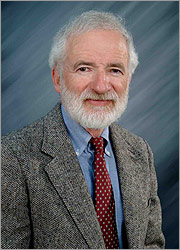Most commercial solar power comes from semiconductor materials. But in recent years, scientists have already been exploring how nanotechnology structures of semiconductors can increase the efficiency of solar cells and the newer branch of solar fuels.

As the fastest growing energy technology in the world, solar energy occupies an increasing share of the world's energy supply. Currently, most commercial solar power comes from semiconductor materials. But in recent years, scientists have already been exploring how nanotechnology structures of semiconductors can increase the efficiency of solar cells and the newer branch of solar fuels.
Despite the controversy that existed about how much the nanostructures could improve solar cells, a recent review of this research by Arthur Nozik, a researcher at the National Renewable Energy Laboratory (NREL) and a professor at the University of Colorado, finds that semiconductor nanostructures have significant potential for energy conversion. Solar for electricity.
In a review published in his latest issue, Nozick summarizes the current state of several approaches to improving photovoltaics with nanotechnology. As he explains, the advantages of semiconductor nanostructures arise from the quantum confinement of negative electrons and positive holes into very small regions of space in nanocrystals. Quantum confinement can occur in one, two or three dimensions. In three dimensions, semiconductors are called "quantum dots". In any such situation, quantum confinement produces quantization effects, resulting in unique optical and electronic properties.
"There are two main theoretical advantages of integrating quantum dots into photovoltaic and solar cells: higher efficiency and lower cost," Nozick said. "There is a theoretical possibility based on thermodynamic calculations of increasing the efficiency of today's solar cells very significantly by 50-100%. In addition, quantum dots can reduce the capital cost of solar cell production in terms of cost per unit area. The combination of low costs per unit area and higher conversion efficiency will reduce the cost of solar energy expressed in Luat cost. Silicon cells are expensive today (about 3 times the cost of electricity today), but quantum dots are based on less expensive chemical methods and allow solutions at low temperature, what's more, they can produce higher conversion efficiency. However, there is still a lot of work to be done before the quantum dots are commercially available."
The basic principle of solar cells is to absorb photons from radiation (usually from the sun) with energies above the energy gap (band gap) of the semiconductors, and use the photons to create free electrons and holes (called "charge carriers"). In order to increase the efficiency of the system, it is important to create many charge carriers from the absorbed photons. This is where the effects of quantum confinement become useful, as the effects combine electrons created in the photovoltaic process with holes into entangled pairs called excitons, encouraging the efficient creation of more than one exciton from a single absorbed photon. In the quantum dots, the process is called MEG ("multiple exciton generation"). Among its advantages, Mag is more efficient and can occur with low-energy photons in the visible region of the solar spectrum compared to the process of replicating charge carriers in ordinary semiconductors (a process called ionization, which is usually limited to the ultraviolet regions where solar photons are absent or rare).
To create multiple excitons, the Mag process must compete with rapid cooling of the primary excitons that are created at high energy (called "hot excitons"). The hot excitons are created by the absorption of blue or near-ultraviolet photons. In semiconductors at room temperature and above, the generated photovoltaic electrons and holes are not combined and there are free charge carriers (called "hot charge carriers").
The excess energy of the hot excitons or hot charge carriers can be quickly lost through phonon-electron interactions and the conversion of the energy into heat, which is calculated as a significant loss of conversion efficiency. However, Nozick notes that despite the controversy, recent studies have shown that the Mag rate can be much faster than the cooling rate of the hot exciton, resulting in a higher efficiency of electron-hole pair duplication. However, despite initial reports of 200% utilization using the quantum dot method, there is no quantum dot-based device that has so far demonstrated an improved actual conversion as a result of the Mg.
"In general, the goal is to create systems with efficiency close to the theoretical limit," said Nozick. "The theoretical efficiency is about 45%, while the current quantum dot efficiency in solar cells is about 3-5% under laboratory conditions. It's a big gap, we need to understand what limits the efficiency of the new approaches."
Despite the controversy over Meg, Nozick concludes that the possibilities for quantum dot-based solar cells and other nanostructures using quantum confinement look promising, despite much work still to be done. One issue that may help the mag realize its full potential is to ensure that the additional excitons attach quickly, as they decay within about 2-10 picoseconds after their formation (a picosecond is 0.000000000001 seconds). Most importantly, Nozick emphasizes that researchers should strive to reach the theoretical maximum efficiency of solar cells.
"There is a certain amount of controversy about third-generation approaches because they are new and not fully understood," Nozick said. "In the past, some of the results could not be reproduced in different laboratories. But now more and more people in recent years are recovering positive results. Laboratories like Los Alamos and NREL measure these phenomena in research centers in the US using different techniques, and get the same answer. So it's a real effect, having a positive effect. However, some people are still skeptical and think that we are not going to reach these values (of theoretical efficiency). But there is no fundamental reason why we cannot reach the same values. It just takes more research, more effort and more understanding."

One response
"Silicon cells are expensive today (about 3 times the cost of electricity today)" - not true, the price of cells dropped a few months ago for the first time to a price cheaper than coal per watt.